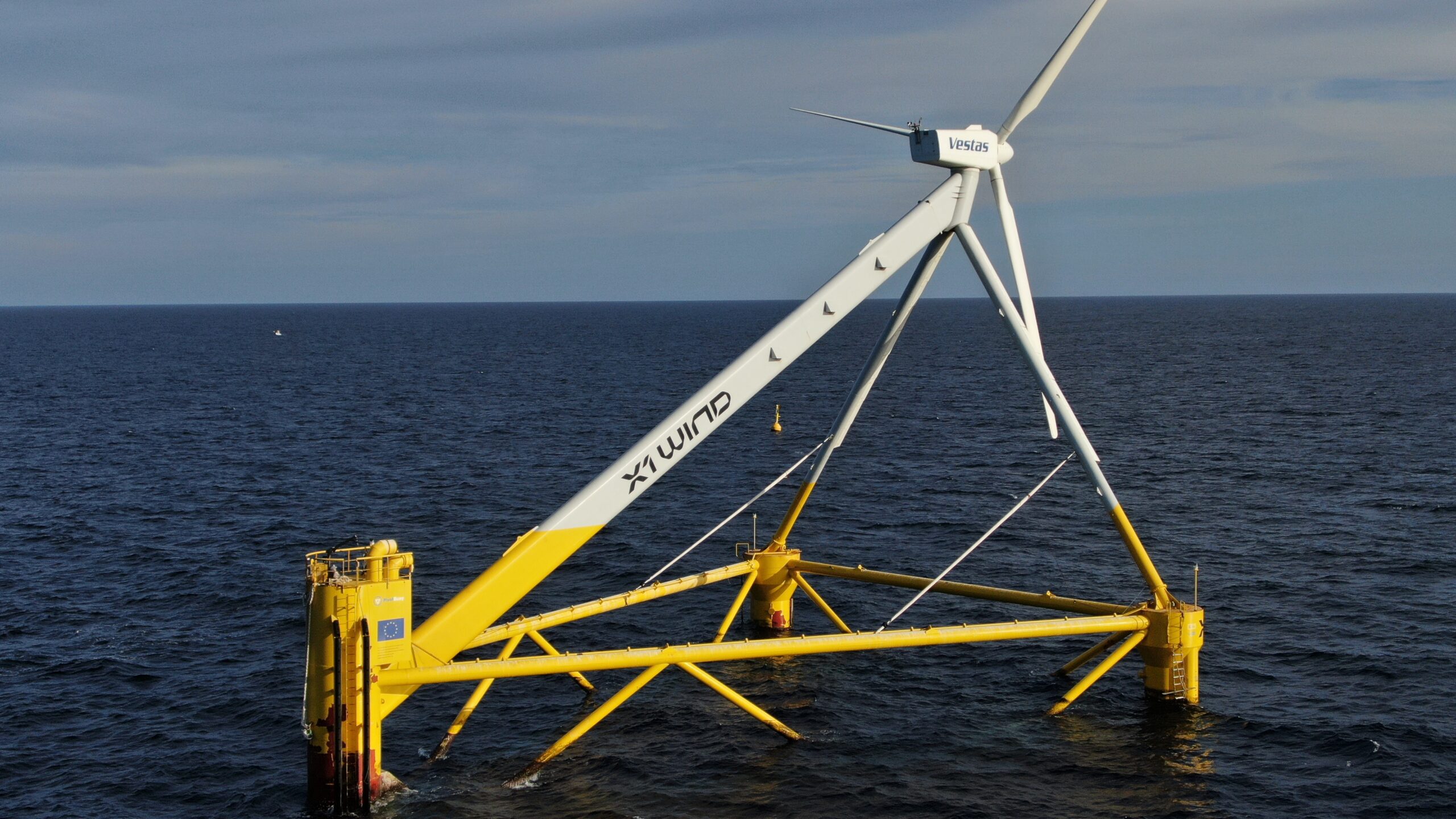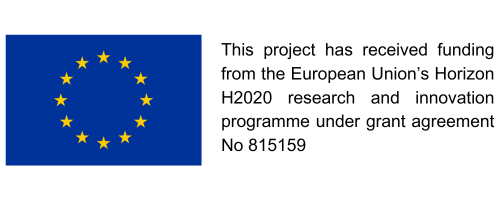X1 Wind has announced today (MARCH 07) that its X30 floating wind prototype, installed in the Canary Islands, successfully produced its first kWh.
The milestone marks the world’s only floating wind platform currently installed with a TLP mooring system, which dramatically reduces the environmental footprint and improves compatibility with other sea uses. It further heralds Spain’s first floating wind prototype to export electricity via a subsea cable.
‘First power’ was fed into PLOCAN’s offshore platform smartgrid via a 1.4km underwater cable. Local teams will now enter the last phase of a rigorous test and verification programme which started with the platform installation in November 2022, in preparation of technology scale-up and certification for commercial scale projects currently under development.
X1 Wind CTO and Co-founder Carlos Casanovas said:
“First power represents a huge milestone for X1 Wind, and the ‘lift-off’ moment we’ve been building towards for many years. The first kWh is always a symbolic moment for any new energy generation project, and for our team, partners and supporters, it crystalises the immense journey we’ve been on and the exciting path which lies ahead. Floating wind is set to play a vital role supporting the future energy transition, global decarbonisation and ambitious net-zero targets. Today’s announcement marks another significant stride forward for X1 Wind accelerating towards certification and commercial scale ambitions to deliver 15MW platforms and beyond in deepwater sites around the globe.”
The novel X30 platform is equipped with a specially adapted V29 Vestas turbine and ABB power converter (read more). Another key design feature, developed through the EU-backed PivotBuoy Project, combines advantages of SPM and TLP mooring systems. The proprietary SPM design enables the floater to ‘weathervane’ passively and maximise energy yields, with an electrical swivel ensuring electricity transfer without cable twisting. The TLP mooring system also dramatically reduces the seabed footprint, compared to traditional designs proposing catenary mooring lines, minimizing environmental impact while maximizing compatibility with other sea uses, in addition to its suitability to move into deeper waters (read more).
X1 Wind’s Electrical Engineering Manager Adrian Oliva said:
“Our first kWh follows a particularly intense period of activity after the dynamic cable lay, platform load-out and installation. Once installed we carried out the first round of testing without power. Now generating power, we’ve commenced a second phase to assess the floater behaviour during operation. This all forms part of X1 Wind’s extensive testing verification programme to fully validate the platform in real world operational conditions and de-risk our technology. The novel X30 platform is equipped with all the electrical systems that the commercial platforms will contain, including a commercial turbine, power converter, transformer, slip-ring and dynamic cable as well as our in-house SCADA system with multiple sensors to control and monitor the platform’s behaviour in real-time. All this data is being fed into our commercial scale design which is advancing fast working closely with certification body DNV.”
Achieving this important milestone is largely due to close cooperation with experienced suppliers as well as PivotBuoy project partners, who have played a key role in the success of this project.
ABB Project Engineer Ramon Macia said:
“We are proud to have been able to contribute to this ambitious project with the X1 Wind team. From ABB we provide experience in regenerative frequency converters, combined with an integral control system developed for Vestas v25, v27 and v29 turbines, installed on land and operating in upwind. In this project we adapted the control for operation on an offshore x30 platform operating in downwind, obtaining excellent results, and highlighting the stability of the platform-turbine unit operating at sea.”
Plataforma Oceánica de Canarias (PLOCAN) CEO Dr José Joaquín Hernández Brito said:
“This marks a significant milestone for the Spanish floating wind industry. Spain has established itself as a global leader in innovative floating wind solutions, with numerous companies developing cutting-edge technologies, world-class research groups, and research centres. The government has also demonstrated its support for the sector by implementing new regulations (MSP) and funding initiatives to strengthen testing infrastructure and enable new pilots to advance these solutions. The PivotBuoy project is a prime example of success in this regard, and its accomplishments should inspire future endeavours.”
The PivotBuoy Project officially comes to a close on March 31, 2023, but X1 Wind has requested an extension of the testing period until May before decommissioning the prototype as foreseen in the EU funded project.
Supported by €4million from the European Commission H2020 Program, with a consortium coordinated by X1 Wind including leading companies EDP NEW, DNV, INTECSEA, ESM and DEGIMA and world-class research centres WavEC, DTU and PLOCAN, PivotBuoy aims to substantially reduce the current Levelized Cost Of Electricity (LCOE) of floating wind. Key advantages of the PivotBuoy system include a reduced floater weight, faster and cheaper installation processes and the ability to reach deeper waters with minimal seabed footprint thanks to the TLP mooring system.
X1 Wind is a disruptive floating wind technology developer. Based in Barcelona, Spain, the firm’s mission is to provide highly scalable solutions which deliver clean, affordable energy while reducing carbon emissions across the globe. The company’s unique floating wind concept was initially developed by Carlos Casanovas in 2012 while studying at the Massachusetts Institute of Technology (MIT), before progressing with the patented technology for almost a decade. In recent years, X1 Wind has rapidly progressed its technology, having successfully executed several tank testing campaigns and completed the design, assembly, load-out, and decommissioning of a full-featured part-scale demonstrator in the Canary Islands. It has recently been selected by the European Commission to deliver the NextFloat project, an ambitious program accelerating industrial-scale floating wind together with Technip Energies and a consortium of 12 partners, to install the first commercial-scale pilot of this innovative technology in the South of France (read more). The company has steadily been building a world-class team of experts in the offshore wind industry and related sectors.

